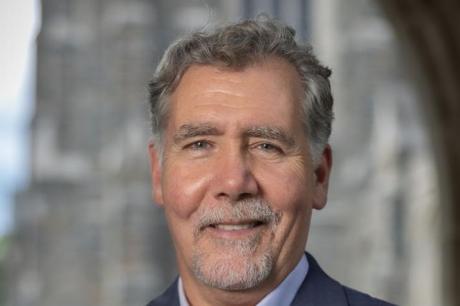Two Duke Global Health Institute faculty members, Charles Nunn and Jeffrey Vincent, were among the co-editors of an issue of Philosophical Transactions of the Royal Society B with the theme of “Conservation, Biodiversity and Infectious Disease: Scientific Evidence and Policy Implications.”
Nunn and Vincent, along with DGHI faculty members Subhrendu Pattanayak and Randall Kramer, also co-authored papers in the issue.
Issue Explores Complex Relationships
“The potential to simultaneously advance conservation and human health has attracted considerable scientific and popular interest,” write the authors in the issue’s introductory paper. “In particular, many authors have justified conservation action by pointing out potential public health benefits.” But as the authors, including Nunn and Vincent, point out, the notion that biodiversity conservation decreases infectious diseases is still subject to debate.
As the articles in this Theme Issue demonstrate, it’s complicated. Moving from ecological data and theory to policy action requires a more thorough understanding of how social and economic factors affect conservation. This collection of papers examines some of these mechanisms through original research, commentaries, and review articles. The collection is divided into three sub-themes:
1. Diversity-Disease Relationships: What is possible? What is probable? This section uses models and synthetic reviews to explore how human-driven disturbances, such as agriculture, logging and biodiversity loss, affect disease transmission.
2. Case Studies: How does environmental disturbance affect human disease risk for specific parasites and pathogens? In this section, authors investigate the ways human-driven disturbance affects infectious diseases and evaluate how policy interventions might reduce disease prevalence for specific biological systems.
Nunn, a professor of evolutionary anthropology and global health, co-authored a paper in this section that examines how loss of animals from ecological communities and associated land-use changes affect several rodent-borne diseases in East Africa. He and his co-authors conclude that while conservation can be an effective tool for reducing rodent-borne pathogens, public health interventions based on conservation strategies should be tailored to specific pathogens and human contexts.
3. Global-Scale, Multi-Factor Analyses: How do conservation and public health intersect in the real world? This section compares how conservation, economic and social factors affect disease risk on a global scale.
DGHI faculty members Pattanayak and Kramer co-authored an opinion piece in this section with Vincent, in which they reviewed three examples from social science research on conservation interventions that affect human health. They make three suggestions for how to evaluate an intervention’s efficacy and value:
- Research on the linkages between diseases and ecosystem destruction and/or modification must be complemented by analysis of disease impacts of specific conservation interventions.
- Because conservation interventions will impose costs on society, it’s imperative to compare the health benefits to these intervention costs and compute a rate of return.
- Heterogeneity will underlie all of the impact evaluations or non-market valuations called for by the previous propositions; therefore, looking at averages will be insufficient.
Collection Originated with Duke Conference
The Theme Issue originated with a conference convened at Duke in May 2015, sponsored by the Triangle Center for Evolutionary Medicine (TriCEM), the Duke Tropical Conservation Initiative and the National Evolutionary Synthesis Center.
The event brought together 40 international experts in diverse fields—ranging from evolutionary biology to veterinary science to economics—to discuss and develop a deeper understanding of how changes in biodiversity impact infectious disease risk in humans and wildlife.
The meeting explored questions such as:
- How can we reconcile conflicting views that natural systems appear to buffer some disease risks, yet also serve as the source of infectious diseases?
- Where can conservation specialists and public health specialists create synergy between the goals of biodiversity conservation and disease control?
- To what extent is conservation likely to be an effective approach for disease mitigation?
Secondary goals of the meeting were to (1) foster new research collaborations among faculty across and beyond Duke University and (2) catalyze more in-depth research into these topics to produce this Theme Issue. Many of the authors of papers in this collection attended the meeting. In addition, the conference led to a Provost Forum on “Conservation and Health,” organized by Vincent, Nunn, and global health and medicine professor Greg Gray.
“The conference we hosted in Durham identified many unanswered and challenging questions, and the collection of papers aims to articulate these questions and provide some initial answers,” said Nunn. “The meeting was also the starting point for other research angles we’re currently investigating.”
Learn more by perusing the articles in this Theme Issue.
Moving from ecological data and theory to policy action requires a more thorough understanding of how social and economic factors affect conservation.



